|
Books Should Be Free Loyal Books Free Public Domain Audiobooks & eBook Downloads |
|
|
Books Should Be Free Loyal Books Free Public Domain Audiobooks & eBook Downloads |
|
Literature |
|---|
|
Book type:
Sort by:
View by:
|
By: Fyodor Dostoyevsky (1821-1881) | |
|---|---|
 Crime and Punishment
Crime and Punishment
A mysterious crime is being plotted in a tiny garret above a dilapidated apartment building in St Petersburg in Russia. The plotter, Rodion Raskolinikov, is a poor student who has delusions of ridding the world of “worthless vermin” and counter balancing these crimes with good deeds. He commits a murder to test his own theories and prove that crime comes naturally to the human species. Crime and Punishment is a path-breaking novel of ideas that changed the course of novel writing in the 20th century... | |
 The Brothers Karamazov
The Brothers Karamazov
Set in 19th century Russia, The Brothers Karamazov (Russian: Братья Карамазовы) is the last novel written by the illustrious author Fyodor Dostoyevsky who died a few months before the book's publication. The deeply philosophical and passionate novel tells the story of Fyodor Karamazov, an immoral debauch whose sole aim in life is the acquisition of wealth. Twice married, he has three sons whose welfare and upbringing, he cares nothing about. At the beginning of the story, Dimitri Karamazov, the eldest son who is now a twenty-eight year old war veteran, returns to his home town to claim the inheritance left to him by his dead mother... | |
 The Idiot
The Idiot
The extraordinary child-adult Prince Myshkin, confined for several years in a Swiss sanatorium suffering from severe epilepsy, returns to Russia to claim his inheritance and to find a place in healthy human society.The teeming St Petersburg community he enters is far from receptive to an innocent like himself, despite some early successes and relentless pursuit by grotesque fortune-hunters. His naive gaucheries give rise to extreme reactions among his new acquaintance, ranging from anguished protectiveness to mockery and contempt... | |
By: Edward M. Forster (1879-1970) | |
|---|---|
 Where Angels Fear to Tread
Where Angels Fear to Tread
On a journey to Tuscany with her young friend and traveling companion Caroline Abbott, widowed Lilia Herriton falls in love with both Italy and a handsome Italian much younger than herself, and decides to stay. Furious, her dead husband’s family send Lilia’s brother-in-law to Italy to prevent a misalliance, but he arrives too late. Lilia marries the Italian and in due course becomes pregnant again. When she dies giving birth to her child, the Herritons consider it both their right and their duty to travel to Monteriano to obtain custody of the infant so that he can be raised as an Englishman. | |
 The Longest Journey
The Longest Journey
Frederick Elliot is a student at early 20th century Cambridge, a university that seems like paradise to him, amongst bright if cynical companions, when he receives a visit from two friends, an engaged young woman, Agnes Pembroke, and her older brother, Herbert. The Pembrokes are Rickie’s only friends from home. An orphan who grew up living with cousins, he was sent to a public (boarding) school where he was shunned and bullied because of his lame foot, an inherited weakness, and frail body. Agnes, as it happens, is engaged to Gerald, now in the army, who was one of the sturdy youths who bullied Rickie at school... | |
By: Various | |
|---|---|
 International Short Stories Volume 1: American Stories
International Short Stories Volume 1: American Stories
The first volume of a 3 volume anthology, this work focuses on American short stories and draws from Nathaniel Hawthorne, Anna Katherine Greene, James Fenimore Cooper, Edgar Allan Poe and many other favorites. Topics range from historical to science fiction, melodramatic to philosophic. | |
By: Walt Whitman (1819-1892) | |
|---|---|
 Leaves of Grass
Leaves of Grass
Nearly 160 years after it was first published, Walt Whitman's Leaves of Grass continues to inspire, enthrall and educate generations of readers. This collection of poems serves as a vehicle for Whitman's philosophy, ideals, love of nature and mystical musings and it subsequently became one of the corner stones of American literature. Whitman was inspired to write Leaves of Grass based on Ralph Waldo Emerson's clarion call for a truly American poet who would tell of its glories, virtues and vices... | |
 Song of the Broad-Axe - stanza 4
Song of the Broad-Axe - stanza 4
This Weekly Poem is an excerpt from Song of the Broad-axe (4th Stanza) by Walt Whitman, who was an American poet, essayist and journalist. A humanist, he was a part of the transition between transcendentalism and realism, incorporating both views in his works. Whitman is among the most influential poets in the American canon, often called the father of free verse. | |
By: Edgar Wallace (1875-1932) | |
|---|---|
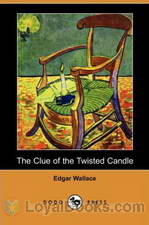 The Clue of the Twisted Candle
The Clue of the Twisted Candle
This story describes a house in Cadogan Square, London, in which extensive alterations have been done by the Greek owner. One of the rooms is built like a safe. The walls floor and roof are made of almost indestructible reinforced concrete. The only door to the room can only be opened or closed by the owner. The single window is unreachable and there is a steel safe built into the outer wall which is in plain sight of the local policeman who patrols the street every night. Yet it is in this barred and shuttered room that the Greek is found brutally murdered... | |
 The Secret House
The Secret House
A stranger and foreigner arrives at the offices of a small publication in London only to be faced by the “editor” whose face is completely swathed in a veil. Nothing is as it seems, and it quickly becomes evident that both are bent on more than lively gossip about the elite. Blackmail and opportunism is the order of the day. When two men are found shot to death outside the door of Mr. Farrington the millionaire who just happens to live a few doors from T. B. Smith, the head of the secret police, the connections to blackmail are not long in coming. Were these men shot by the blackmailer? Who is actually what he seems to be? | |
By: Edith Nesbit (1858-1924) | |
|---|---|
 Railway Children
Railway Children
A thrilling spy story, a children's adventure, a charming portrait of early twentieth century life in London and the countryside and a heart warming family tale are all combined in this classic of children's literature The Railway Children by E Nesbit. The book has remained on the list of the best-loved children's books ever since it was first published as a serial story in The London Magazine in 1905. Later, it was published in book form and won acclaim from critics and readers across the world for its wonderful elements of character and plot... | |
 All Round the Year
All Round the Year
A light and whimsical collection of poems by the celebrated children’s author E Nesbit, in collaboration with Saretta Nesbit. | |
 Many Voices (selection from)
Many Voices (selection from)
E. Nesbit (Edith Bland) was a prodigious 19th century children’s writer who produced over 60 books of fiction for children. This book of poems has many elements which would appeal to children but there’s also some exploration of her feelings of love, lust and longing which your average 10 year old would find downright yucky. There are also moments of joy, moments of sugary sweetness and moments of sharp insight in this collection which contains views from many angles. Recurring themes of love, death, gardens and fairies give us a fine insight into the lively imagination of E. Nesbit. Summary by Jim Mowatt. | |
By: Thornton W. Burgess | |
|---|---|
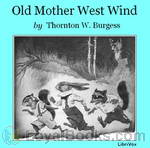 Old Mother West Wind
Old Mother West Wind
Thornton Waldo Burgess (January 14, 1874 – June 5, 1965) was a conservationist and author of children’s stories. He loved the beauty of nature and its living creatures so much that he wrote about them for 50 years. By the time he retired, he had written more than 170 books. Many of his outdoor observations in nature were used as plots for his stories. In his first book, “Old Mother West Wind,” published in 1910, the reader meets many of the characters found in later books and stories. These... | |
By: Nathaniel Hawthorne | |
|---|---|
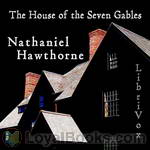 The House of the Seven Gables
The House of the Seven Gables
“The wrongdoing of one generation lives into the successive ones and… becomes a pure and uncontrollable mischief.” Hawthorne’s moral for “The House of the Seven Gables,” taken from the Preface, accurately presages his story. The full weight of the gloomy mansion of the title seems to sit on the fortunes of the Pyncheon family. An ancestor took advantage of the Salem witch trials to wrest away the land whereon the house would be raised… but the land’s owner, about to be executed as a wizard, cursed the Pyncheon family until such time as they should make restitution... | |
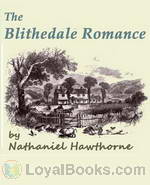 The Blithedale Romance
The Blithedale Romance
The Blithedale Romance is the story of four principal characters who work with -- and sometimes against -- each other on Blithedale, a communal farm antecedent to those that sprang up later in the 1960s, and similar to one on which Hawthorne himself lived in 1841. These communes arose out of the pressures on society and the individual brought by the Industrial Revolution. Some were organized around religious philosophies, some were secular. Among the secularists, the Transcendental movement mentioned in the novel espoused the idea that the individual's intuition, rather than religious dogma, was the true path to spiritual enlightenment... | |
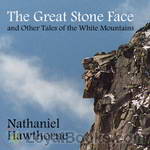 The Great Stone Face and Other Tales of the White Mountains
The Great Stone Face and Other Tales of the White Mountains
A collection of four short stories by Nathaniel Hawthorne, the common theme of which is New Hampshire's White Mountains. Consists of: The Great Stone Face, written in 1850 and revolves around the 'Old Man of the Mountain (Cannon Mtn.) in New Hampshire which sadly collapsed on May 3, 2003; The Ambitious Guest, written in 1835; The Great Carbuncle, written in 1837; and Sketches From Memory, written sometime prior to The Great Carbuncle as will become obvious. | |
 The Marble Faun
The Marble Faun
The Marble Faun is Hawthorne's most unusual romance. Writing on the eve of the American Civil War, Hawthorne set his story in a fantastical Italy. The romance mixes elements of a fable, pastoral, gothic novel, and travel guide. In the spring of 1858, Hawthorne was inspired to write his romance when he saw the Faun of Praxiteles in a Roman sculpture gallery. The theme, characteristic of Hawthorne, is guilt and the Fall of Man. The four main characters are Miriam, a beautiful painter who is compared... | |
By: William Blake (1757-1827) | |
|---|---|
 Songs of Innocence and Experience
Songs of Innocence and Experience
“Tiger, tiger, burning bright/In the forests of the night/ What immortal hand or eye/ Could frame thy fearful symmetry?” These often quoted lines are part of The Tiger in William Blake's Songs of Innocence and Experience. In 1789, William Blake released a limited edition of the book. Being a gifted artist, poet and printmaker, he undertook to personally publish all his work himself through a very painstaking but highly artistic process of etching, thereby transferring his drawings and poems individually onto copper plates by hand... | |
 Poems of William Blake
Poems of William Blake
Songs of Innocence and of Experience: Shewing the Two Contrary States of the Human Soul are two books of poetry by the English poet and painter, William Blake. Although Songs of Innocence was first published by itself in 1789, it is believed that Songs of Experience has always been published in conjunction with Innocence since its completion in 1794. Songs of Innocence mainly consists of poems describing the innocence and joy of the natural world, advocating free love and a closer relationship with God, and most famously including Blake’s poem The Lamb... | |
By: Andre Norton (1912-2005) | |
|---|---|
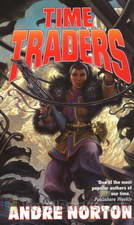 The Time Traders
The Time Traders
If it is possible to conquer space, then perhaps it is also possible to conquer time. At least that was the theory American scientists were exploring in an effort to explain the new sources of knowledge the Russians possessed. Perhaps Russian scientists had discovered how to transport themselves back in time in order to learn long-forgotten secrets of the past. That was why young Ross Murdock, above average in intelligence but a belligerently independent nonconformist, found himself on a “hush-hush” government project at a secret base in the Arctic... | |
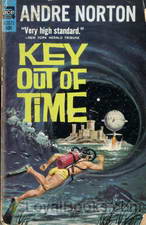 Key Out of Time
Key Out of Time
This is Book 4 in the Time Traders Series, In this book Ross Murdock and Arthur Ashe continue their adventures in Time and Space on the World of Hawaika. Hawaiian and Polynesian settlers help Ross and Ashe discover the way the world has changed from the data tape to present time. Helped by a girl (Karara) and her two trained dolphins (Tino-rau and Taua) | |
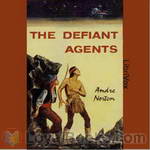 The Defiant Agents
The Defiant Agents
Travis Fox and a band of fellow Apache AmerIndians have their racial memories and survival abilities enhanced by the Redax machine and are sent to the planet Topaz, one of the few worlds of the ancient star empire that the US has voyage tapes to. But the Reds have “snooped” the tapes and get there first, and have a nasty surprise waiting for any ship that does not have the proper identification. Travis and some of his fellow Apaches survive the ensuing crash landing…but can they defeat the Reds and win Topaz for themselves? This work is a sequel to both The Time Traders and Galactic Derelict... | |
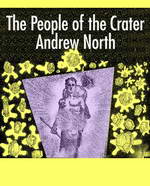 The People of the Crater
The People of the Crater
An air force pilot adrift in peacetime is recruited to join an Antarctic expedition. When a strange mist downs his plane he discovers an ancient alien civilization which has prophesized his arrival. Now he and his faithful pet Ana must descend to the depths of the crater and face the Black Ones in order to rescue the fair Thrala, daughter of the Ancient Ones. – Andre Norton (Alice Mary Norton) was a popular author of science fiction and fantasy who began publishing stories in the early 1930s. “The People of the Crater” was first published in volume 1 number 1 of Fantasy Book in 1947. | |
 Rebel Spurs
Rebel Spurs
In 1866, only men uprooted by war had reason to ride into Tubacca, Arizona, a nondescript town as shattered and anonymous as the veterans drifting through it. So when Drew Rennie, newly discharged from Forrest’s Confederate scouts, arrived leading everything he owned behind him—his thoroughbred stud Shiloh, a mare about to foal, and a mule—he knew his business would not be questioned. To anyone in Tubacca there could be only one extraordinary thing about Drew, and that he could not reveal: his name, Rennie... | |
 Ralestone Luck
Ralestone Luck
Rupert Ralestone is officially the Marquess of Lorne--but with no family money or prestige, the title is worthless. He and his younger brother and sister return to the old family homestead--Pirate's Haven. Their only hope is to find the family's talisman, a great sword, and restore it to its proper place. | |
By: Jerome K. Jerome (1859-1927) | |
|---|---|
 Told after Supper
Told after Supper
It is Christmas Eve, and the narrator, his uncle and sundry other local characters are sitting round the fire drinking copious quantities of whisky punch and telling ghost stories until bedtime, when… But no, I won’t spoil the fun. This is a little gem: Jerome at his tongue-in-cheek best. | |
 Stage Land
Stage Land
A comic look at the curious habits and customs of the inhabitants of ‘Stage Land’. Dedicated to ‘that highly respectable but unnecessarily retiring individual, of whom we hear so much but see so little, “the earnest student of drama” | |
 They and I
They and I
A man and his three children leave the “Little Mother” at home in the city and set up temporary housekeeping in a country cottage to supervise the remodeling of the house he has just purchased there. The story is narrated by the father. His interactions with his children, interspersed with his own recollections of past events, make for hilarious reading. This is Jerome at his best, IMHO, although this is apparently one of this lesser known novels. | |
 Tea-table Talk
Tea-table Talk
As the New York Times said in 1903, this lesser-known work by Jerome K. Jerome does not display “the wit of Congreve or even the glittering sort Mr. Jerome employs in some of his other books.”It takes the form of imaginary conversations between the writer and a number of un-named characters at the afternoon tea table. The Woman of the World, the Old Maid, the Girton Girl, the Philosopher and the Minor Poet wax lyrical on subjects like marriage, art, society and politics. Frequently they appear to prefer the sound of their own voice to that of others... | |
 Idle Ideas in 1905
Idle Ideas in 1905
Back in 1905 Jerome K. Jerome shared his thoughts on a variety of subjects, including "Should Women Be Beautiful?", "Should Soldiers Be Polite?" and "Is The American Husband Made Entirely Of Stained Glass?". Every subject is analysed and commented on in the witty and satirical style we have grown to expect from the author. | |
By: George Eliot (1819-1880) | |
|---|---|
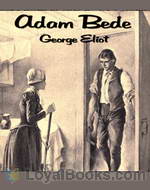 Adam Bede
Adam Bede
A young carpenter falls in love with the village beauty. She, however, has set her sights on a dashing army captain who's the son of the wealthy local squire. Meanwhile, a beautiful and virtuous young woman preacher arrives in the village. What happens to these people and the strange twists and turns that their lives take are described in the rest of the book. Adam Bede was George Eliot's first published novel. Published in 1859, the book has remained a firm favorite with readers and academicians alike and is still taught in many English literature courses all over the world... | |